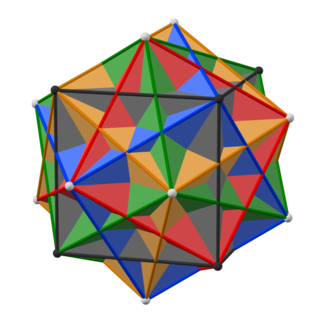In mathematics
111 is the fourth non-trivial nonagonal number, [1] and the seventh perfect totient number. [2]
111 is furthermore the ninth number such that its Euler totient of 72 is equal to the totient value of its sum-of-divisors:
- [3]
Two other of its multiples (333 and 555) also have the same property (with totients of 216 and 288, respectively). [lower-alpha 1]
Magic squares

The smallest magic square using only 1 and prime numbers has a magic constant of 111: [5]
| 31 | 73 | 7 |
| 13 | 37 | 61 |
| 67 | 1 | 43 |
Also, a six-by-six magic square using the numbers 1 to 36 also has a magic constant of 111:
| 1 | 11 | 31 | 29 | 19 | 20 |
| 2 | 22 | 24 | 25 | 8 | 30 |
| 3 | 33 | 26 | 23 | 17 | 9 |
| 34 | 27 | 10 | 12 | 21 | 7 |
| 35 | 14 | 15 | 16 | 18 | 13 |
| 36 | 4 | 5 | 6 | 28 | 32 |
(The square has this magic constant because 1 + 2 + 3 + ... + 34 + 35 + 36 = 666, and 666 / 6 = 111). [lower-alpha 2]
On the other hand, 111 lies between 110 and 112, which are the two smallest edge-lengths of squares that are tiled in the interior by smaller squares of distinct edge-lengths (see, squaring the square). [7]
Properties in certain radices
111 is or the second repunit in decimal, [8] a number like 11, 111, or 1111 that consists of repeated units, or ones. 111 equals 3 × 37, therefore all triplets (numbers like 222 or 777) in base ten are repdigits of the form . As a repunit, it also follows that 111 is a palindromic number. All triplets in all bases are multiples of 111 in that base, therefore the number represented by 111 in a particular base is the only triplet that can ever be prime. 111 is not prime in decimal, but is prime in base two, where 1112 = 710. It is also prime in many other bases up to 128 (3, 5, 6, ..., 119) (sequence A002384 in the OEIS ). In base 10, it is furthermore a strobogrammatic number, [9] as well as a Harshad number. [10]
In base 18, the number 111 is 73 (= 34310) which is the only base where 111 is a perfect power.




